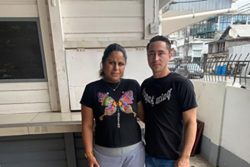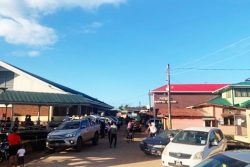Laryngitis
 The larynx is the organ (really a cavity) in the upper part of the windpipe (trachea) which has cartilaginous (elastic, flexible tissue) walls, and which when moved by associated muscles will vary the tension of the vocal cords, and hence the quality of the sound produced. Colloquially it is known as the “voice box”. The larynx (like the pharynx) forms part of the air passage to the lungs.
The larynx is the organ (really a cavity) in the upper part of the windpipe (trachea) which has cartilaginous (elastic, flexible tissue) walls, and which when moved by associated muscles will vary the tension of the vocal cords, and hence the quality of the sound produced. Colloquially it is known as the “voice box”. The larynx (like the pharynx) forms part of the air passage to the lungs.
Laryngitis is the inflammation of the tissue lining the larynx.
The canal, which begins at the inside of the mouth and ends at the anus, is coated by a thin film of tissue called the mucous membrane. The larynx, which is closely associated with that canal, also has a mucous membrane lining. It is also made up of cartilage. Sometimes, the coating and the cartilage become inflamed and we speak of laryngitis.
Causes
There are several causes of laryngitis. It may be the result of an upper respiratory tract infection. On the other hand, the direct inhalation of dust or smoke or even some irritating chemical substance (a toxic gas or the fumes of an acid, etc) could precipitate laryngitis.
I referred to dust particles above, but larger foreign bodies can get stuck in the larynx and create an inflammation. It has been known that veterinary surgeons, while intubating an animal for anaesthetic purposes, have unwittingly damaged the larynx.
A dog owner could put on a collar too tight or yank the dog on a leash so severely as to damage the larynx from the outside. And I should mention that any dog that barks incessantly could develop laryngitis (just as humans who talk too much or too loudly can ‘lose’ their voices).
I think that it is worthy of mention that companion animals, especially dogs, living with indoor cigarette smokers tend to develop throat problems, as well as many other respiratory ailments.
Finally, laryngitis can be associated with or be the sequel to several diseases, for example, canine distemper (which by the way, is quite prevalent in Guyana even as I write).
Symptoms
Usually, the first sign of laryngitis is a lush, dry, short cough. Later on, the cough is associated with a liquid buildup, and then we hear a softer and moist cough. This phase is often accompanied with pain. The dog actually shows signs of discomfort when the coughing episode begins. The coughing spasm is exaggerated when the pressure is placed on the larynx, or if the animal swallows large morsels of cold food or cold water.
Changes in the way the dog barks (the sound) are noticeable. Bad breath and difficult, noisy breathing are usually evident.
As the malady progresses, the dog may stand with its head down and with its mouth open trying to ease the pressure (and pain) on the larynx. In some cases, the body temperature increases to as much as 105°F (40-41°C).
An increase of water fluid (edema, dropsy) in the tissue of the larynx develops early, and this results in an increased rate of breathing (the dog is making a real effort to breathe). Because there is not enough air being inhaled, the tissues become starved of oxygen, and carbon dioxide accumulates causing the tissue in the mouth and tongue to take on a blue pallor (cyanosis). The pulse rate is racing as the heart tries to compensate for lack of oxygen. At this point, the ailment has been allowed to progress too far without treatment, and the situation is critical.
Treatment
Before the condition becomes critical, the animal should be visiting the vet. At the onset, the vet would introduce medication which would reduce the inflammatory swelling. Antibiotics could be administered at this stage, especially if there is a fever. I tend to prescribe diuretic drugs to get rid of the increase in fluid in and around the larynx.
If there is laryngeal obstruction, only your vet can intervene, possibly with the help of a special tracheotomy tube.
While all this intervention is being administered, one should offer the animal some supportive therapy, which would include soft (liquid) food and a clean, dust-free environment. Pain-killers (analgesics) are indicated to combat the discomfort.
Please vaccinate your animals (not lastly against canine distemper) if necessary, early in the year.
Please implement disease preventative measures (vaccinations, routine dewormings, monthly anti-Heartworm medication, etc) and adopt-a-pet from the GSPCA’s Animal Clinic and Shelter at Robb Street and Orange Walk, if you have the wherewithal to care well for the animals. Do not stray your unwanted pets, take them to the GSPCA’s Clinic and Shelter instead. If you do not wish your pet to have puppies or kittens, you may exploit the GSPCA’s free spay and neutering programme. If you see anyone being cruel to an animal, or if you need any technical information, please get in touch with the Clinic and Shelter by calling 226-4237.






